1. 基础知识
1.1 概念
- ArrayList是可以动态增长和缩减的索引序列,它是基于数组实现的List类。
- 该类封装了一个动态再分配的Object[]数组,每个对象都有一个capacity属性,表示它们所封装的Object[]数组长度,当向ArrayList中添加元素时,该属性会自动增加。
如果向ArrayList中添加大量元素,可使用ensureCapacity()方法一次性增加capacity,可以减少增加重分配的次数提高性能。
- ArrayList的用法和Vector相似,但Vector是一个较老的集合,具有很多缺点,不建议使用。
ArrayList和Vector的区别是:ArrayList是线程不安全的,当多个线程访问同一个ArrayList集合时,程序需要手动保证该集合的同步性,而Vector是线程安全的。可以使用CopyOnWriteArrayList。
1.2 继承关系
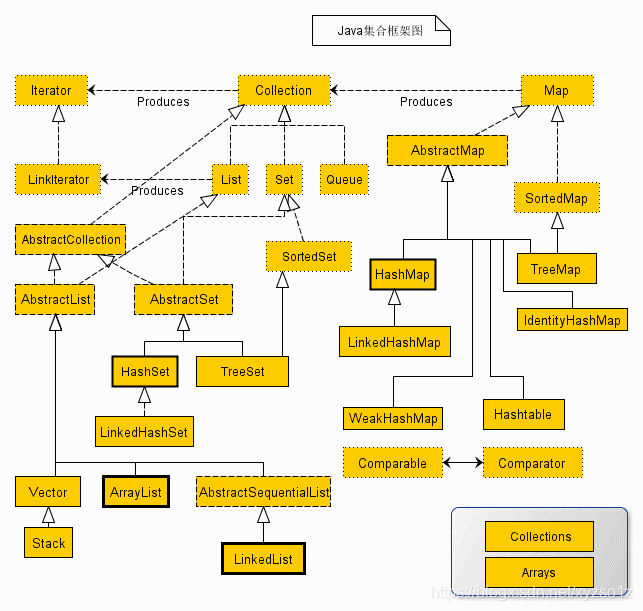
由上图可知最根部就是实现了Collection接口,下面我们从ArrayList的角度来分析一下继承关系:

上面这张图可以很清晰的看出ArrayList实现了四个接口一个抽象类:继承AbstractList抽象类、实现了List、RandomAccess、Cloneable、Serializable接口。
- 继承AbstractList, 实现了List。它是一个数组,提供了相关的增、删、修改、遍历等功能。
- RandomAccess接口:这个是一个标记性接口,通过查看api文档,它的作用就是用来快速随机存取,有关效率的问题,在实现了该接口的话,那么使用普通的for循环来遍历,性能更高,例如ArrayList。
- Cloneable接口:实现了该接口,就可以使用Object.Clone()方法了。
- Serializable接口:实现该序列化接口,表明该类可以被序列化,什么是序列化?简单的说,就是能够从类变成字节流传输,然后还能从字节流变成原来的类。
1.3 特点
- ArrayList底层是一个动态扩容的数组结构,初始容量为10,每次容量不够的时候,扩容需要增加1.5倍的容量(当通过addAll()方法添加数据时有可能不是1.5被扩容);
- ArrayList允许存放重复数据,存储顺序按照元素的添加顺序,也允许Null;
- 底层使用Arrays.copyOf()函数进行扩容,每次扩容都会产生新的数组,和数组中内容的拷贝,会耗费性能,所以在多增删的操作情况可优先考虑LinkedList,如果多按下标存取元素情况下推荐使用ArrayList。
- ArrayList并不是一个线程安全的集合。如果集合的增删操作需要保证线程的安全性,可以考虑使用CopyOnWriteArrayList或者使用Collections.synchronizedList(List)函数返回一个线程安全的ArrayList类。
2. 源码阅读
2.1 类中的属性
/**
* 序列化时使用
*/
private static final long serialVersionUID = 8683452581122892189L;
/**
* 集合的默认大小
*/
private static final int DEFAULT_CAPACITY = 10;
/**
* 用于空实例的共享空数组实例
*/
private static final Object[] EMPTY_ELEMENTDATA = {};
/**
* 这也是一个空的数组实例,和EMPTY_ELEMENTDATA空数组相比是用于了解添加元素时数组膨胀多少
*/
private static final Object[] DEFAULTCAPACITY_EMPTY_ELEMENTDATA = {};
/**
* 存储ArrayList的元素的数组缓冲区。 ArrayList的容量是此数组缓冲区的长度。
* 添加第一个元素时,任何具有elementData == DEFAULTCAPACITY_EMPTY_ELEMENTDATA的空ArrayList都将扩展为DEFAULT_CAPACITY。
*/
transient Object[] elementData; // non-private to simplify nested class access
/**
* 当前ArrayList大小
*/
private int size;
EMPTY_ELEMENTDATA 、DEFAULTCAPACITY_EMPTY_ELEMENTDATA的区分会在本文后续具体说明。
2.2 构造方法
ArrayList有三个构造方法

-
无参构造方法
/** * Constructs an empty list with an initial capacity of ten. 这里就说明了默认会给10的大小,所以说一开始ArrayList的容量是10 */ public ArrayList() { this.elementData = DEFAULTCAPACITY_EMPTY_ELEMENTDATA; }ArrayList中存储的数据其实就是一个数组,这个数组就是
elementDatam。此时初始容量是0。 -
有参数构造方法
/** * Constructs an empty list with the specified initial capacity. * * @param initialCapacity the initial capacity of the list * @throws IllegalArgumentException if the specified initial capacity * is negative */ public ArrayList(int initialCapacity) { if (initialCapacity > 0) { this.elementData = new Object[initialCapacity]; } else if (initialCapacity == 0) { this.elementData = EMPTY_ELEMENTDATA; } else { throw new IllegalArgumentException("Illegal Capacity: " + initialCapacity); } }初始化集合大小创建 ArrayList 集合。当大于0时,给定多少那就创建多大的数组;当等于0时,创建一个空数组;当小于0时,抛出异常。
-
参数为集合的构造方法
public ArrayList(Collection<? extends E> c) { elementData = c.toArray(); if ((size = elementData.length) != 0) { // c.toArray might (incorrectly) not return Object[] (see 6260652) if (elementData.getClass() != Object[].class) elementData = Arrays.copyOf(elementData, size, Object[].class); } else { // replace with empty array. this.elementData = EMPTY_ELEMENTDATA; } }这是将已有的集合复制到 ArrayList 集合中去。
可以看到,不管调用哪个构造方法,都会初始化内部elementData。
2.3 添加元素
通过前面的字段属性和构造函数,我们知道 ArrayList 集合是由数组构成的,那么向 ArrayList 中添加元素,也就是向数组赋值。我们知道一个数组的声明是能确定大小的,而使用 ArrayList 时,好像是能添加任意多个元素,这就涉及到数组的扩容。
2.3.1 add()方法
/**
* Appends the specified element to the end of this list.
*
* @param e element to be appended to this list
* @return <tt>true</tt> (as specified by {@link Collection#add})
*/
public boolean add(E e) {
ensureCapacityInternal(size + 1); // Increments modCount!!
elementData[size++] = e;
return true;
}
/**
* Inserts the specified element at the specified position in this
* list. Shifts the element currently at that position (if any) and
* any subsequent elements to the right (adds one to their indices).
*
* @param index index at which the specified element is to be inserted
* @param element element to be inserted
* @throws IndexOutOfBoundsException {@inheritDoc}
*/
public void add(int index, E element) {
if (index > size || index < 0)
throw new IndexOutOfBoundsException(outOfBoundsMsg(index));
ensureCapacityInternal(size + 1); // Increments modCount!!
System.arraycopy(elementData, index, elementData, index + 1,
size - index);
elementData[index] = element;
size++;
}
可以看到,不管是调用哪个构造方法,都会首先执行 ensureCapacityInternal(size + 1) 确认内部容量。
2.3.2 ensureCapacityInternal()
private void ensureCapacityInternal(int minCapacity) {
// 如果创建ArrayList时,使用的无参的构造方法,那么就取默认容量10和最小需要容量中的较大一个值
if (elementData == DEFAULTCAPACITY_EMPTY_ELEMENTDATA) {
minCapacity = Math.max(DEFAULT_CAPACITY, minCapacity);
}
ensureExplicitCapacity(minCapacity);
}
private void ensureExplicitCapacity(int minCapacity) {
modCount++;
// 如果minCapacity比当前容量大,就执行grow扩容
if (minCapacity - elementData.length > 0)
grow(minCapacity);
}
/**
* The maximum size of array to allocate.
* Some VMs reserve some header words in an array.
* Attempts to allocate larger arrays may result in
* OutOfMemoryError: Requested array size exceeds VM limit
*/
private static final int MAX_ARRAY_SIZE = Integer.MAX_VALUE - 8;
/**
* Increases the capacity to ensure that it can hold at least the
* number of elements specified by the minimum capacity argument.
*
* @param minCapacity the desired minimum capacity
*/
private void grow(int minCapacity) {
// 拿到当前容量
int oldCapacity = elementData.length;
// oldCapacity >> 1 意思是oldCapacity/2,所以新容量就是增加1/2
int newCapacity = oldCapacity + (oldCapacity >> 1);
//如果心容量小于需要的最小扩容的容量,以需要的最小容量为准进行扩容
if (newCapacity - minCapacity < 0)
newCapacity = minCapacity;
// 如果新容量大于允许的最大容量,则以Interger的最大值进行扩容
if (newCapacity - MAX_ARRAY_SIZE > 0)
newCapacity = hugeCapacity(minCapacity);
// minCapacity is usually close to size, so this is a win:
elementData = Arrays.copyOf(elementData, newCapacity);
}
// 设置容器容量为最大容量
private static int hugeCapacity(int minCapacity) {
if (minCapacity < 0) // overflow
throw new OutOfMemoryError();
return (minCapacity > MAX_ARRAY_SIZE) ?
Integer.MAX_VALUE :
MAX_ARRAY_SIZE;
}
上面代码注释很清楚,不赘述。
此外ArrayList还有addAll(Collection<? extends E> c)、 addAll(int index, Collection<? extends E> c) 方法,类似。
2.4 移除元素——remove ()方法
/**
* Removes the element at the specified position in this list.
* Shifts any subsequent elements to the left (subtracts one from their
* indices).
*
* @param index the index of the element to be removed
* @return the element that was removed from the list
* @throws IndexOutOfBoundsException {@inheritDoc}
*/
public E remove(int index) {
// 判断是否越界 不过为啥不判断<0的情况呢
if (index >= size)
throw new IndexOutOfBoundsException(outOfBoundsMsg(index));
modCount++;
E oldValue = (E) elementData[index];
// 主要移动的元素数量,即 总长度-(下标 + 1)
int numMoved = size - index - 1;
if (numMoved > 0)
System.arraycopy(elementData, index+1, elementData, index,
numMoved);
elementData[--size] = null; // clear to let GC do its work
return oldValue;
}
/**
* Removes the first occurrence of the specified element from this list,
* if it is present. If the list does not contain the element, it is
* unchanged. More formally, removes the element with the lowest index
* <tt>i</tt> such that
* <tt>(o==null ? get(i)==null : o.equals(get(i)))
* (if such an element exists). Returns <tt>true</tt> if this list
* contained the specified element (or equivalently, if this list
* changed as a result of the call).
*
* @param o element to be removed from this list, if present
* @return <tt>true</tt> if this list contained the specified element
*/
public boolean remove(Object o) {
if (o == null) {
// 如果删除null数据,只会删除第一个null元素
for (int index = 0; index < size; index++)
if (elementData[index] == null) {
fastRemove(index);
return true;
}
} else {
for (int index = 0; index < size; index++)
if (o.equals(elementData[index])) {
fastRemove(index);
return true;
}
}
return false;
}
/*
* Private remove method that skips bounds checking and does not
* return the value removed.
*/
private void fastRemove(int index) {
modCount++;
int numMoved = size - index - 1;
if (numMoved > 0)
System.arraycopy(elementData, index+1, elementData, index,
numMoved);
elementData[--size] = null; // clear to let GC do its work
}
2.4 设置元素 —— set()方法
set()方法就是在指定位置改变一个元素的值
/**
* Replaces the element at the specified position in this list with
* the specified element.
*
* @param index index of the element to replace
* @param element element to be stored at the specified position
* @return the element previously at the specified position
* @throws IndexOutOfBoundsException {@inheritDoc}
*/
public E set(int index, E element) {
//依然先判断是否越界,如果越界就抛出异常,你没有越界直接修改值,把旧值返回
if (index >= size)
throw new IndexOutOfBoundsException(outOfBoundsMsg(index));
E oldValue = (E) elementData[index];
elementData[index] = element;
return oldValue;
}
2.5 其它方法
/**
* Returns the element at the specified position in this list.
*
* @param index index of the element to return
* @return the element at the specified position in this list
* @throws IndexOutOfBoundsException {@inheritDoc}
*/
public E get(int index) {
if (index >= size)
throw new IndexOutOfBoundsException(outOfBoundsMsg(index));
return (E) elementData[index];
}
/**
* Removes all of the elements from this list. The list will
* be empty after this call returns.
*/
public void clear() {
modCount++;
// clear to let GC do its work
for (int i = 0; i < size; i++)
elementData[i] = null;
size = 0;
}
/**
* Returns the index of the first occurrence of the specified element
* in this list, or -1 if this list does not contain the element.
* More formally, returns the lowest index <tt>i</tt> such that
* <tt>(o==null ? get(i)==null : o.equals(get(i)))</tt>,
* or -1 if there is no such index.
*/
public int indexOf(Object o) {
if (o == null) {
for (int i = 0; i < size; i++)
if (elementData[i]==null)
return i;
} else {
for (int i = 0; i < size; i++)
if (o.equals(elementData[i]))
return i;
}
return -1;
}
/**
* Returns the index of the last occurrence of the specified element
* in this list, or -1 if this list does not contain the element.
* More formally, returns the highest index <tt>i</tt> such that
* <tt>(o==null ? get(i)==null : o.equals(get(i)))</tt>,
* or -1 if there is no such index.
*/
public int lastIndexOf(Object o) {
if (o == null) {
for (int i = size-1; i >= 0; i--)
if (elementData[i]==null)
return i;
} else {
for (int i = size-1; i >= 0; i--)
if (o.equals(elementData[i]))
return i;
}
return -1;
}
3. 总结
- ArrayList底层是一个动态扩容的数组,初始容量为10,每次容量不足时,扩容值当前的1.5倍容量。
- 增加(add)和删除(remove)操作会改变modCount,但是查找(get)和修改(set)不会修改。
- 从上面可以看出,增删都可能涉及数组拷贝,效率比较低,但是查找和修改时效率很高。
- 从上面可以看出,ArrayList对null元素是支持的,并且不会限制数量,也不会限制重复元素。
- 全文没见Synchronized关键字,也没有其它保证线程安全的操作,所以是线程不安全的,可以使用CopyOnWriteArrayList或者使Collections.synchronizedList(List)函数返回一个线程安全的ArrayList类来保证线程安全。
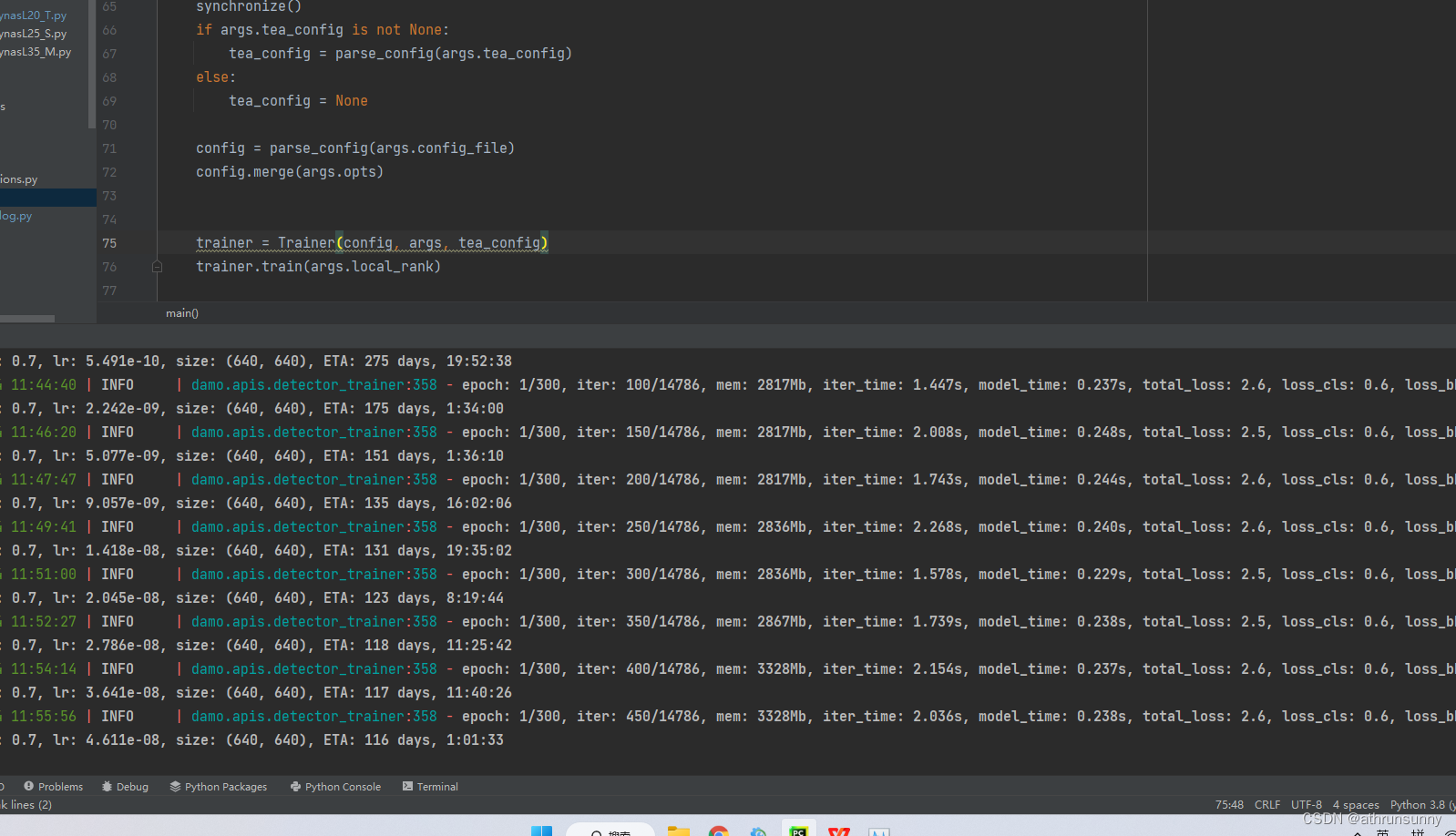


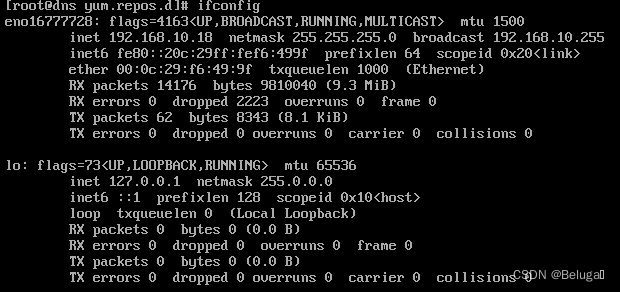



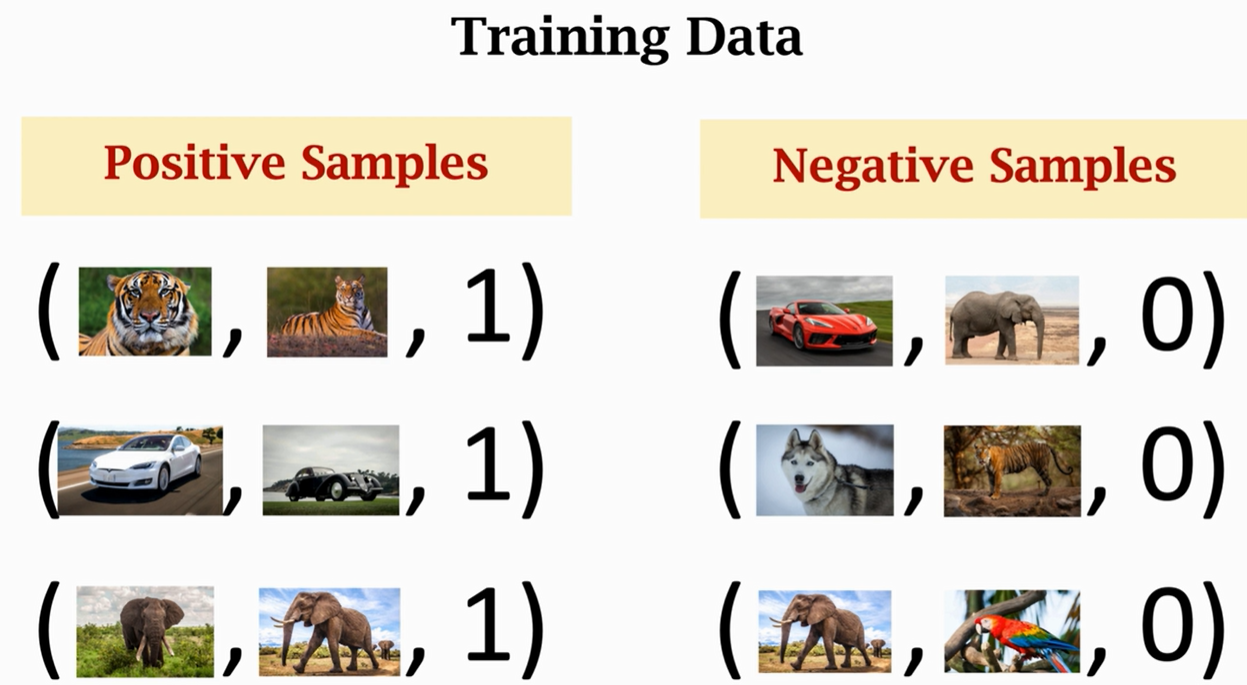

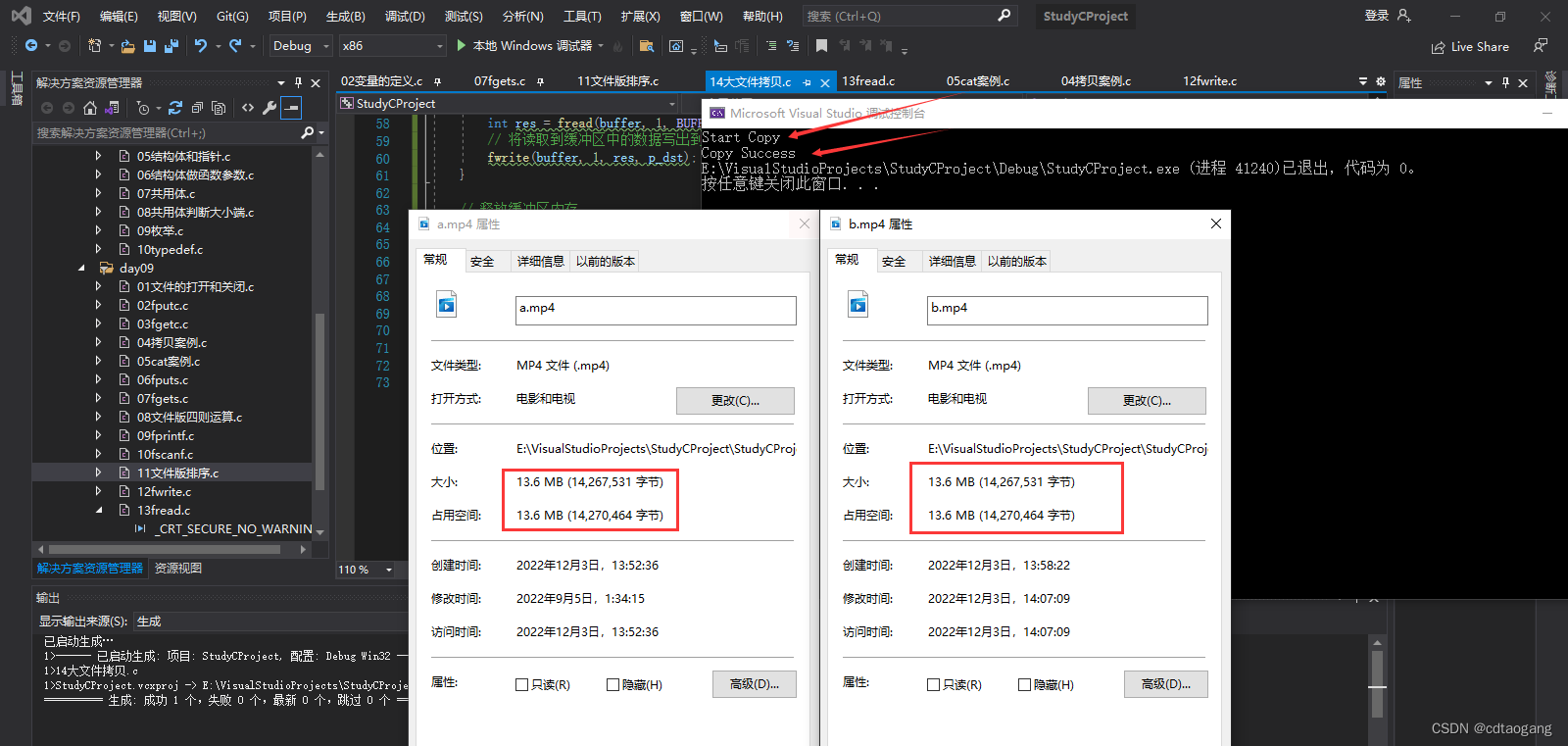

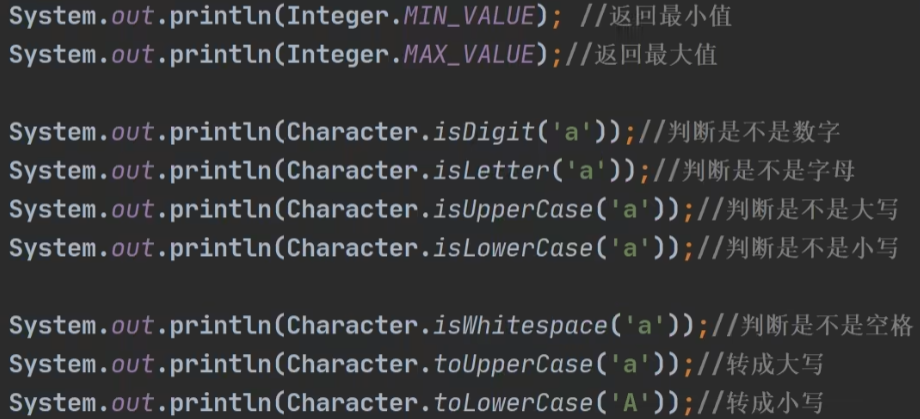
![[附源码]JAVA毕业设计框架的电脑测评系统(系统+LW)](https://img-blog.csdnimg.cn/28d7120757514faab44a7c785fac3ffe.png)


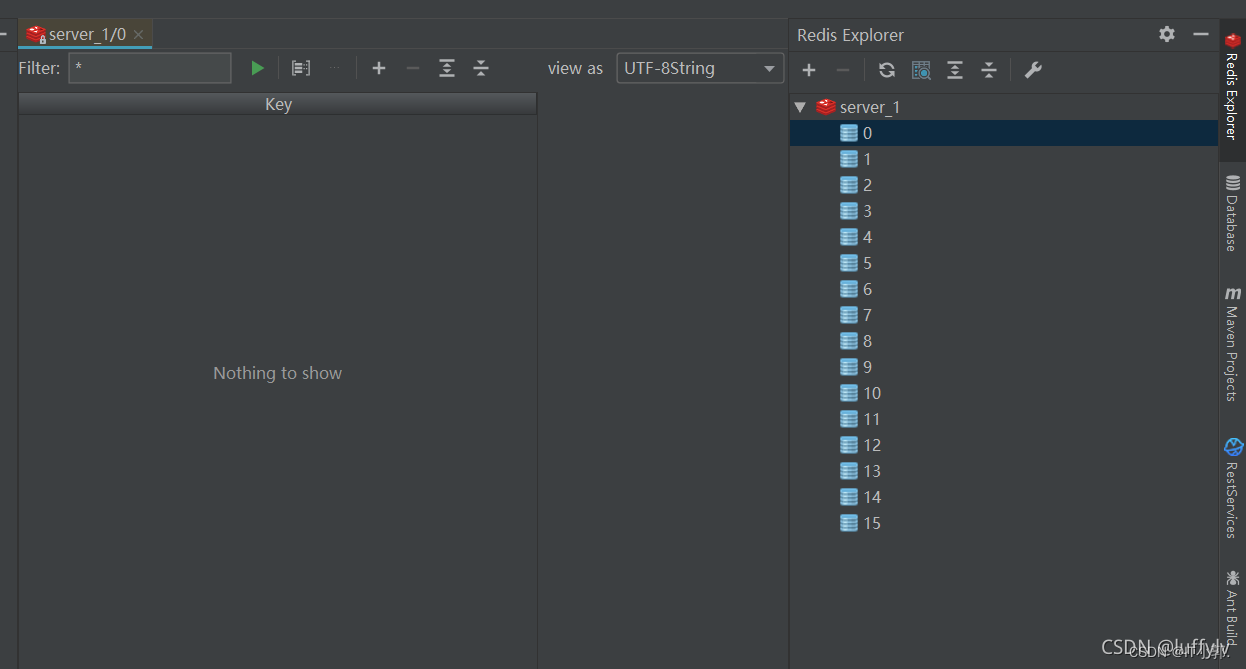

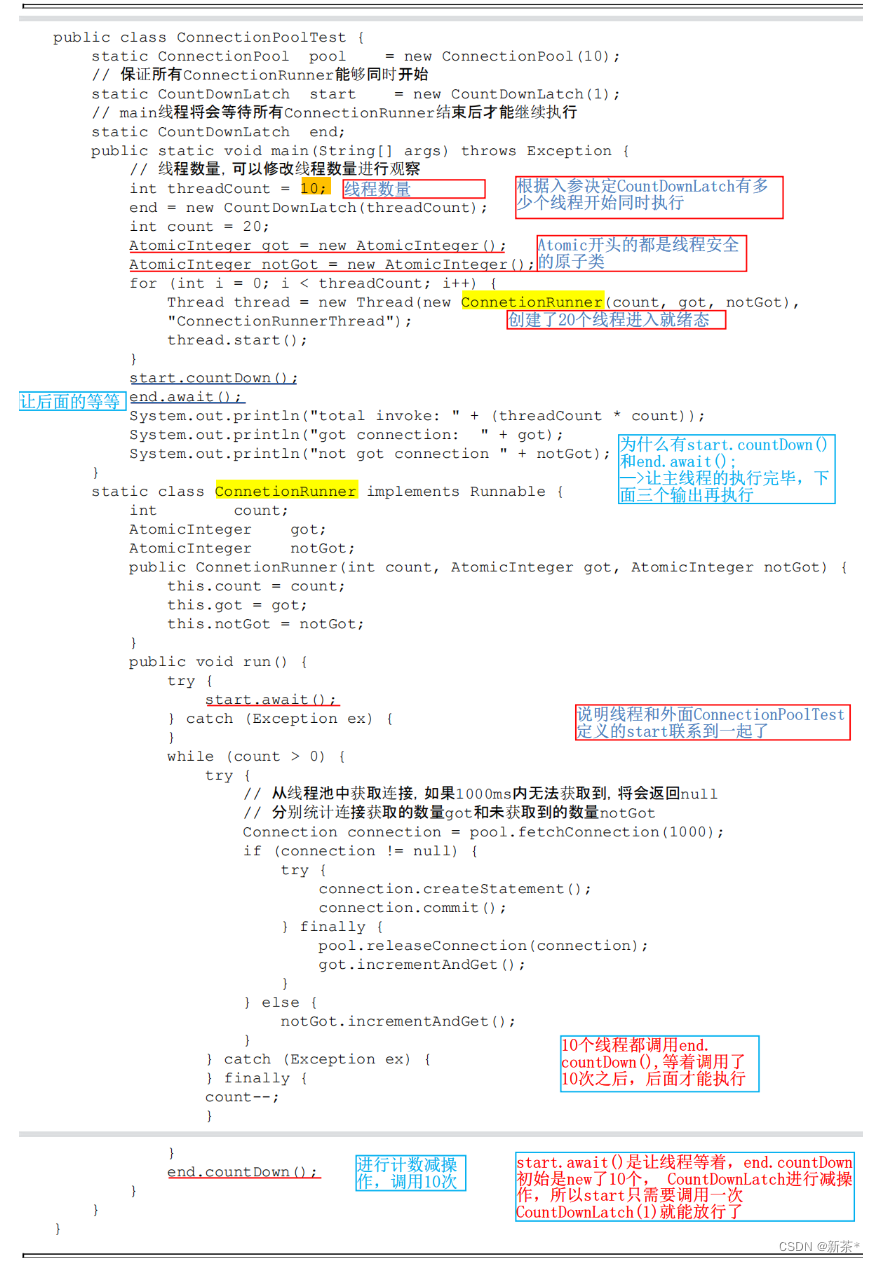
![[附源码]计算机毕业设计基于Springboot的物品交换平台](https://img-blog.csdnimg.cn/9a871b2a856548ce8269de27954d50fd.png)
